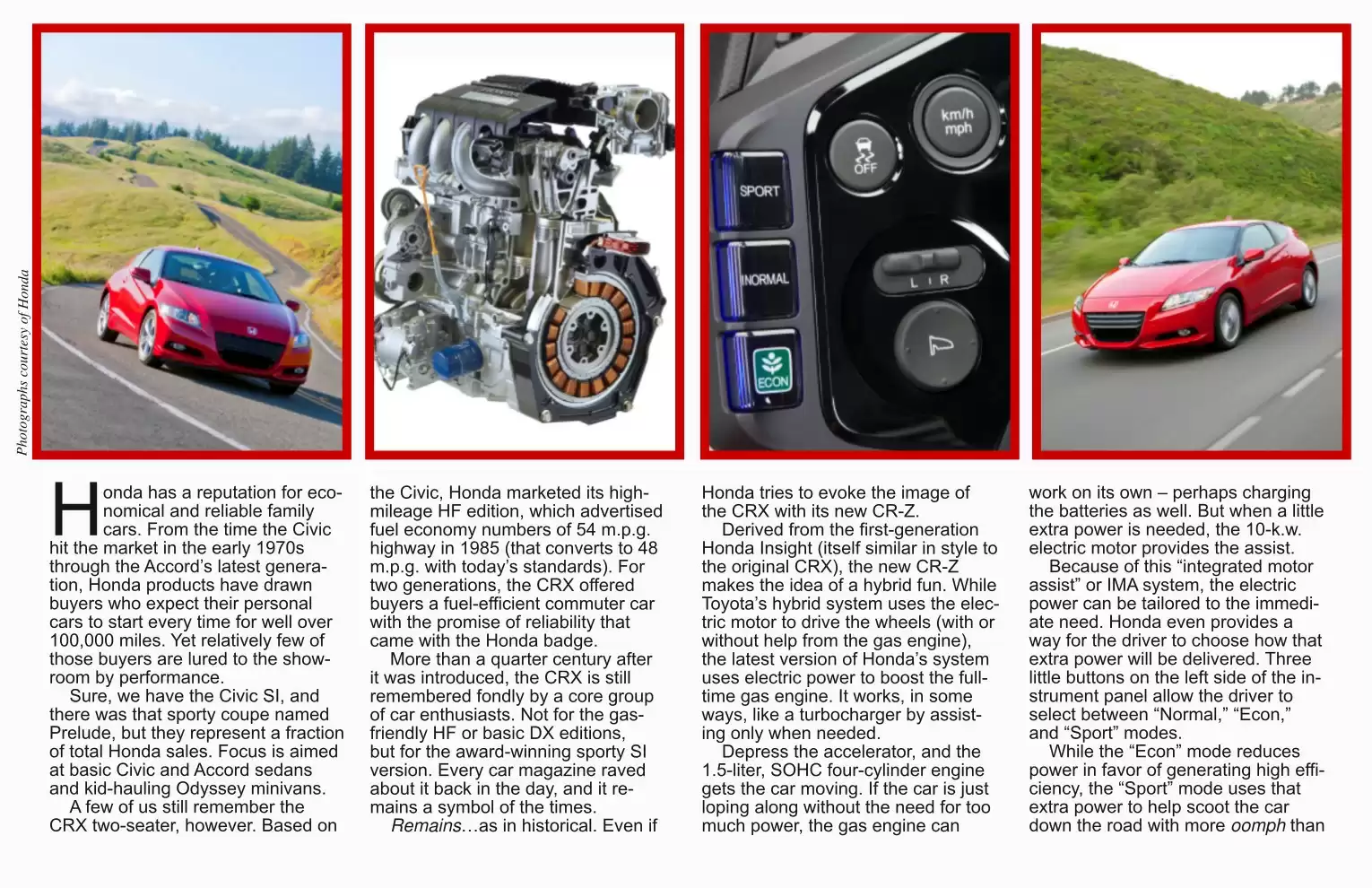
Honda has a reputation for economical and reliable family cars. From the time the Civic hit the market in the early 1970s through the Accord's latest generation, Honda products have drawn buyers who expect their personal cars to start every time for well over 100,000 miles. Yet relatively few of those buyers are lured to the showroom by performance.
Sure, we have the Civic SI, and there was that sporty coupe named Prelude, but they represent a fraction of total Honda sales. Focus is aimed at basic Civic and Accord sedans and kid-hauling Odyssey minivans.
A few of us still remember the CRX two-seater, however. Based on the Civic, Honda marketed its high-mileage HF edition, which advertised fuel economy numbers of 54 m.p.g. highway in 1985 (that converts to 48 m.p.g. with today's standards). For two generations, the CRX offered buyers a fuel-efficient commuter car with the promise of reliability that came with the Honda badge.
More than a quarter century after it was introduced, the CRX is still remembered fondly by a core group of car enthusiasts. Not for the gas-friendly HF or basic DX editions, but for the award-winning sporty SI version. Every car magazine raved about it back in the day, and it remains a symbol of the times.
Remains...as in historical. Even if Honda tries to evoke the image of the CRX with its new CR-Z.
Derived from the first-generation Honda Insight (itself similar in style to the original CRX), the new CR-Z makes the idea of a hybrid fun. While Toyota's hybrid system uses the electric motor to drive the wheels (with or without help from the gas engine), the latest version of Honda's system uses electric power to boost the full-time gas engine. It works, in some ways, like a turbocharger by assisting only when needed.
Depress the accelerator, and the 1.5-liter, SOHC four-cylinder engine gets the car moving. If the car is just loping along without the need for too much power, the gas engine can work on its own--perhaps charging the batteries as well. But when a little extra power is needed, the 10-k.w. electric motor provides the assist.
Because of this "integrated motor assist" or IMA system, the electric power can be tailored to the immediate need. Honda even provides a way for the driver to choose how that extra power will be delivered. Three little buttons on the left side of the instrument panel allow the driver to select between "Normal," "Econ," and "Sport" modes.
While the "Econ" mode reduces power in favor of generating high efficiency, the "Sport" mode uses that extra power to help scoot the car down the road with more oomph than
| Previous Page | Next Page |
Contents
Features:
Columns:
- Rear View Mirror (Richard Truesdell)
- The Road Ahead (Robyn Larson McCarthy)
- Cruising Round-Up
- Arm Out the Window